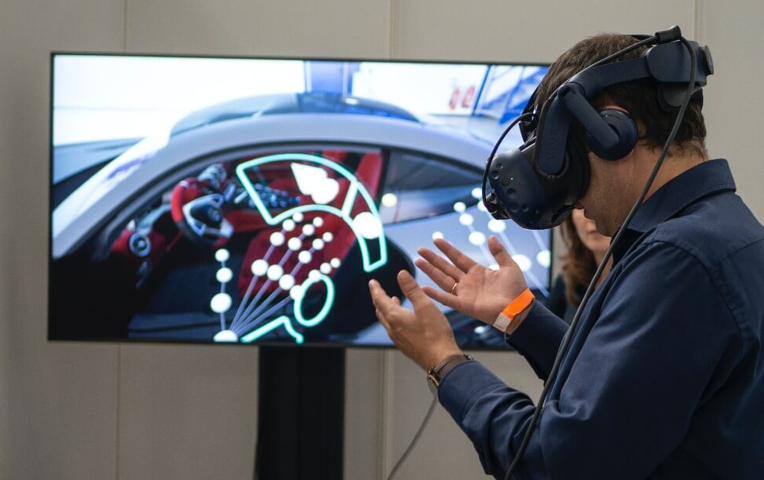How Immersive Marketing Techniques Contribute To a Film’s Success
Speaking to your audience has taken a different form in today’s digitalized world. With the availability of innovative technologies like VR (Virtual Reality) and AR (Augmented Reality), you can effectively promote your product by having potential customers “experience” what you’re selling. Compared to just letting your target audience “know” your product features, an immersive, technology-based marketing method is a huge step forward.
These immersive and experiential technologies have also taken over cinema marketing. Traditional movie marketing methods like posters, billboards, and trailers are still present, but their value is taking a negative hit. The future of the movie industry might be in immersive technology, and that’s not just a matter of opinion.
In fact, it’s The Walt Disney Company was found to be the company with the most interest in hiring AR and VR experts, at least in the tourism industry. Even though this statistic is tourism-related, there’s still a significant chance it will trickle over to Disney’s media and entertainment endeavors. After all, Disney Studios is the frontrunner among top-grossing movie production companies, having accumulated $79 billion in global box office sales.
If Disney is investing more resources into immersive cinema experience and experiential marketing, there’s no doubt that the rest of the movie industry will be influenced as well. But before we dive deeper into cinema-specific examples, let’s first go into detail on what experiential marketing is all about.
What is Experiential Marketing?
When telling a personal story to your friend, you always want to tell it in a way that they’re almost re-living the whole experience. You try your best to describe details vividly and build suspense as you work your way up to the story’s highlight. In a way, you want to stir up emotions and let your friend experience what you just went through.
Experiential marketing works in the same way. This marketing method doesn’t just use words and empty promises; it’s a user-driven strategy that lets your customers experience the product you’re promoting first-hand.
You may not be aware of it, but experiential marketing has been present across industries for a long time. Concrete examples of experiential marketing include the following scenarios:
- A pizza restaurant offering a free taste of their new recipes
- A software company offering a free 30-day trial
- A car manufacturer offering a test run on their newly-released model
- A movie production company rolling out a trailer that people can view in VR
So you see, experiential marketing has been in our lives for some time now. But the rise of innovative technologies could highlight this marketing method even more. Back in the day, people had to go outside their homes and go to a mall or a trade center to taste experiential marketing. Now, different brands across different industries are leveraging the availability of VR headsets and similar technologies as channels for experiential marketing.
Movie production companies are also starting to release trailers with VR capability. A classic example was when Warner Bros. Pictures released a VR trailer for “IT,” a supernatural horror film. The VR experience might have piqued the audience’s interest, as the horror movie raked in a staggering $123.1 million on its opening weekend.
Along with experiential marketing, another marketing method is taking shape in the cinema industry. This comes in the form of interactive marketing, another customer-driven strategy aimed at getting diverse engagements from a target audience.
Interactive Marketing as a Form of Film Marketing
If you’re active across various social media platforms, you may have encountered some brands doing polls to let customers vote on their favorite products. On top of finding out which products are most favorable in the market, this could be a way for companies to stay in touch with their customer base.
Interactive marketing campaigns are becoming increasingly rampant these days, especially with the easy access brands and customers have on social media. Gone are the days when you need to hand out survey forms or do interviews with your potential customer base. Of course, you can still do these, but it might be easier to go with interactive campaigns.
This marketing method is also becoming popular in the cinema industry. For example, if you go to Twitter, you can see Marvel’s Guardians of the Galaxy using the hashtag “#GotGVol3” to engage with their audience. It may be a very mundane strategy, but it works in terms of getting engagement from the customer base.
How Important is Immersive Marketing to a Film’s Success?
Even for big-name production companies, the marketing side of things is always a top priority. Trends and tendencies are always changing in the market, and a movie production company has to stay up-to-date to keep up in this ever-changing industry.
Immersive marketing is one of the trends today, and it serves quite a value for upcoming films. Here are several reasons why immersive marketing techniques like experiential marketing and interactive campaigns have become vital in the cinema industry.
Identify your target audience
Immersive marketing is a new way for you to determine the customer base for your movie. If you’re doing interactive campaigns on websites and social media platforms, it’s easier to observe trends and measure results. For example, you could see the performances of your posts and campaigns in real time, which allows you to determine the demographics of people interested in the theme of your movie.
Build up anticipation
Even if you have a pre-determined audience base, successfully building anticipation could help reel in a broader audience before your movie’s official release. The important thing is to get people talking, and word-of-mouth magic could surprise you even more.
Stay in touch with your audience
The top priority of experiential marketing and interactive campaigns is engaging with your audience. For example, you could roll out a VR-capable trailer before the film’s release, then do a movie-related poll after your movie’s opening weekend. This way, you’re tapping into the personal experiences of your audience, which could help build their loyalty toward your brand.




